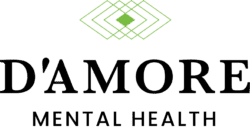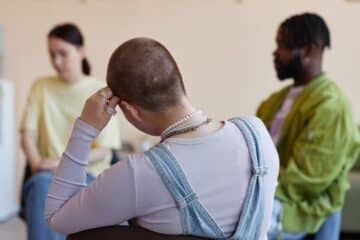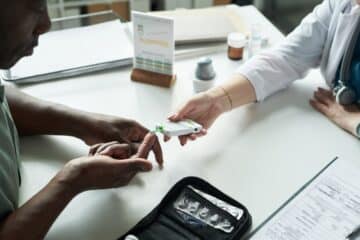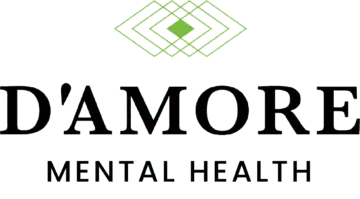The phenomenon of distorted self-image emerges as a complex interplay of psychological, social, and cultural dynamics. This condition, where individuals perceive themselves in a manner starkly different from reality, has profound implications for their mental and emotional well-being. By analyzing diverse perspectives and insights from the literature, this article aims to comprehensively understand distorted self-image, its causes, manifestations, and avenues for intervention and self-help.
Understanding Distorted Self-Image
At the core of distorted self-image lies a complex interplay of cognitive biases and emotional vulnerabilities. Individuals with this condition often fall prey to “negative filtering,” a cognitive distortion where one predominantly focuses on perceived flaws or negatives, overlooking positive attributes or achievements. This skewed perception is perpetually reinforced by internal dialogues that are critical and unforgiving, leading to a self-image that is not only inaccurate but also deeply ingrained.
The Role of Self-Comparison
The human tendency to compare oneself with others plays a significant role in developing and perpetuating a distorted self-image. Social comparison, especially in the age of digital media, can exacerbate feelings of inadequacy and low self-esteem. The curated portrayals of perfection on social media platforms can create unrealistic benchmarks for beauty, success, and worthiness, further distorting an individual’s self-perception.
The Impact of Past Experiences
Past experiences, particularly those rooted in childhood and adolescence, can impact one’s self-image. Negative feedback, criticism, or bullying related to one’s appearance, abilities, or worth can solidify into a negative core belief about oneself. These experiences contribute to a foundation on which distorted self-image is built, often making it challenging to dismantle and rebuild a more positive and accurate self-concept.
Distorted Self-Image and Body Dysmorphic Disorder
It’s crucial to distinguish between a general distorted self-image and Body Dysmorphic Disorder (BDD), a more severe psychological condition characterized by obsessive thoughts about perceived physical defects or flaws. While both share similarities in the distorted perception of self, BDD involves more extreme fixations and behaviors aimed at fixing or hiding these perceived flaws, significantly impairing daily functioning and quality of life.
The Influence of Cultural and Societal Norms
Cultural and societal norms significantly influence self-image. The ideals promoted by one’s culture or society regarding beauty, success, and behavior can set unrealistic standards for individuals, leading to a sense of falling short. These norms vary across different cultures and evolve over time, making the quest for acceptance and self-worth a moving target for many.
The Multifaceted Causes of Distorted Self-Image
The roots of a distorted self-image often lie in the psychological realm, where early experiences, personality traits, and mental health conditions play crucial roles. Individuals with a predisposition to anxiety or depression may be more susceptible to developing negative perceptions of themselves, as these conditions can exacerbate feelings of worthlessness or inadequacy. Moreover, traumatic experiences, particularly those related to body image or self-esteem during formative years, can leave lasting imprints, shaping one’s self-view in detrimental ways.
Societal and Media Influences
In contemporary society, the omnipresence of media and the pervasive influence of social platforms contribute significantly to shaping norms and ideals regarding beauty, success, and worthiness. Constant exposure to images and narratives that glorify certain body types, lifestyles, or achievements can create unrealistic benchmarks for self-evaluation. This incessant bombardment of idealized images leads to heightened self-scrutiny and comparison, fostering a fertile ground for distorted self-images to take root and flourish.
Cultural Expectations and Norms
Cultural factors also play a significant role in the development of distorted self-images. Cultural norms regarding beauty, behavior, and success vary widely, yet they invariably set standards individuals feel compelled to meet. In many cultures, these expectations are deeply ingrained from a young age, influencing self-perception and worth. The pressure to conform to these cultural standards can lead to a disconnection between one’s authentic self and the self presented to the world, exacerbating feelings of inadequacy and self-doubt.
Interpersonal Relationships and Feedback
The nature and quality of interpersonal relationships significantly impact self-image. Positive reinforcement and supportive feedback from peers, family, and significant others can bolster self-esteem and foster a healthy self-image. Conversely, negative interactions, criticism, and comparison within these relationships can undermine self-worth and contribute to a distorted perception of oneself. The human tendency to internalize feedback, especially from those close to us, underscores the importance of nurturing positive relationships in building a healthy self-image.
Biological and Genetic Factors
Emerging research suggests that biological and genetic factors may also contribute to the propensity for developing distorted self-images. While the genetic predisposition towards certain mental health conditions like anxiety or depression is well-documented, there is growing evidence to suggest that these predispositions can intersect with environmental factors to influence self-perception. Understanding the biological underpinnings of distorted self-image is crucial for developing targeted interventions that address both the psychological and physiological aspects of this condition.
The causes of distorted self-image are deeply interwoven, spanning psychological, cultural, societal, interpersonal, and biological domains. This complexity necessitates a holistic approach to intervention and support that considers the myriad factors at play and addresses them through comprehensive strategies tailored to the individual’s unique experiences and context. Acknowledging and understanding these multifaceted causes is the first step toward fostering healthier self-perceptions and promoting overall well-being.
Distorted Self-Image Manifestations and Consequences
The manifestations and consequences of distorted self-image are varied and profound, impacting individuals on multiple levels—emotional, psychological, social, and sometimes even physical. Understanding these manifestations is crucial for recognizing the depth and breadth of the issue and for providing the appropriate support and interventions.
Emotional and Psychological Impact
One of the most immediate manifestations of a distorted self-image is the emotional turmoil it generates. Individuals may experience a persistent sense of unhappiness or dissatisfaction with themselves, which can spiral into deeper psychological issues, including depression, anxiety, and extreme self-consciousness. This constant internal struggle often leads to a diminished sense of self-worth, exacerbating loneliness and isolation.
The psychological repercussions extend into areas of life that require self-esteem and confidence. People with a distorted self-image may doubt their abilities, second-guess their decisions, and feel unworthy of success or happiness. This self-doubt can be a barrier to personal growth, creating a self-fulfilling prophecy where individuals do not reach their full potential due to their lack of belief in themselves.
Social Consequences
Socially, a distorted self-image can lead to withdrawal and avoidance behaviors. Fear of judgment or ridicule can make social interactions seem daunting, decreasing participation in social, educational, or work-related activities. This withdrawal limits opportunities for personal and professional development and exacerbates feelings of isolation and loneliness.
Interpersonal relationships can also suffer. Individuals with a distorted self-image may project their insecurities onto others, perceive neutral comments as critical, or avoid intimacy for fear of rejection. These patterns can strain relationships, leading to social withdrawal and increased reliance on negative self-perceptions.
Physical and Behavioral Manifestations
The consequences of a distorted self-image can manifest physically and behaviorally in various ways. For some, it leads to disordered eating behaviors as they attempt to conform to an idealized body image. Others may engage in excessive exercise or resort to cosmetic procedures to alter their appearance, sometimes with detrimental effects on their health.
Compulsive behaviors, such as constant mirror checking or grooming, can also indicate a distorted self-image. These behaviors are often attempts to gain control over perceived flaws but usually serve only to reinforce the individual’s negative self-perception.
Impact on Daily Functioning and Quality of Life
The pervasive nature of distorted self-image means it can infiltrate almost every aspect of daily life, from the inability to enjoy simple pleasures to maintaining focus at work or school. The energy expended on negative self-focus and coping behaviors can deplete one’s capacity to engage fully in life, leading to missed opportunities and decreased overall life satisfaction.
The quest for perfection, driven by a distorted self-image, can create a relentless cycle of setting and failing to meet unattainable standards. This cycle can lead to chronic stress, anxiety, and, in some cases, mental health crises if left unaddressed.
The manifestations and consequences of distorted self-image underscore the critical need for awareness, understanding, and compassionate intervention. By recognizing the multifaceted impact of this issue, individuals loved ones, and professionals can take steps toward fostering environments that promote healthy self-perception and support the journey toward self-acceptance and well-being. Addressing distorted self-image is not merely about improving how one sees oneself in the mirror—it’s about enhancing overall quality of life and enabling individuals to see and realize their true potential.
Navigating Through Distorted Self-Image
Navigating through the complexities of distorted self-image involves a multifaceted approach that acknowledges the depth and breadth of its impact on an individual’s life. This journey towards healing and self-acceptance requires not only an understanding of the roots of distorted self-image but also the adoption of strategies aimed at reconstructing a healthier self-perception. Below, we explore several pivotal steps and interventions that can assist individuals in this process.
Recognizing the Distortion
The first step in navigating through a distorted self-image is recognizing and acknowledging the distortion itself. This involves becoming aware of the negative thought patterns and beliefs about oneself that do not align with reality. Mindfulness techniques can be particularly effective in this phase, as they encourage individuals to observe their thoughts and feelings without judgment, fostering an awareness of how their perceptions may be skewed.
Seeking Professional Support
Professional psychological support plays a critical role in addressing distorted self-image. Therapists can employ a variety of approaches, including Cognitive Behavioral Therapy (CBT), which helps individuals identify and challenge distorted thoughts and beliefs, replacing them with more balanced and accurate perceptions. For cases where distorted self-image is linked to conditions such as Body Dysmorphic Disorder (BDD) or eating disorders, more specialized therapeutic interventions may be necessary.
Cultivating Self-Compassion
Self-compassion is a powerful antidote to the harsh self-criticism that characterizes distorted self-image. It involves treating oneself with the same kindness, concern, and understanding that one would offer a good friend. Practices that foster self-compassion, such as journaling, self-compassion meditations, and exercises designed to bolster self-kindness, can significantly impact how individuals view and treat themselves.
Challenging Social and Cultural Norms
Navigating through distorted self-image involves critically examining and challenging the societal and cultural norms contributing to unrealistic beauty standards, success, and worth. This may include limiting exposure to media that perpetuates these standards, engaging in activism or advocacy that promotes body positivity and diversity, and consciously curating a social media feed that reflects a wide range of body types, lifestyles, and achievements.
Building Supportive Relationships
The support of friends, family, and peers is invaluable in overcoming a distorted self-image. Building and maintaining relationships with individuals who affirm one’s worth and provide encouragement and understanding can fortify one’s sense of self and combat feelings of isolation and inadequacy. Support groups, either online or in-person, can also offer a sense of community and shared experience that is particularly empowering.
Engaging in Positive Activities
Engaging in activities that one enjoys and fosters a sense of achievement can help shift the focus from appearance or perceived flaws to talents, skills, and positive experiences. Whether through creative expression, physical activity, volunteering, or any other endeavor that brings joy and fulfillment, these activities can bolster self-esteem and contribute to a more positive and multifaceted self-image.
Embracing a Journey of Self-Discovery
Ultimately, navigating through a distorted self-image is a journey of self-discovery. It involves exploring and affirming one’s values, interests, and strengths beyond physical appearance or societal approval. This process can lead to a deeper understanding of oneself, fostering a sense of authenticity and self-acceptance that is resilient to external pressures and criticisms.
Navigating through distorted self-image is a complex and deeply personal process that unfolds differently for everyone. Individuals can embark on a transformative journey towards a healthier, more balanced self-perception by combining professional support, self-compassion, critical awareness, supportive relationships, and positive activities. This journey promotes personal healing and contributes to a broader cultural shift towards acceptance and diversity.
Self-Acceptance and Growth
Coping with a distorted self-image necessitates a holistic approach encompassing self-awareness, self-compassion, and cultivating positive relationships. Engaging in activities that foster a sense of purpose and fulfillment, alongside nurturing a supportive network of friends and family, can significantly ameliorate the effects of distorted self-image. Additionally, the journey toward healing is marked by the gradual but resolute acceptance of one’s intrinsic worth, independent of external validation.
Distorted self-image reflects the intricate interplay between individual vulnerabilities and external influences. While the journey towards self-acceptance and positive self-regard may be challenging, it is imbued with the potential for profound personal growth and transformation. Through therapeutic intervention, supportive relationships, and a commitment to self-compassion, individuals can navigate the complexities of distorted self-image, embarking on a path toward healing and self-discovery.





































